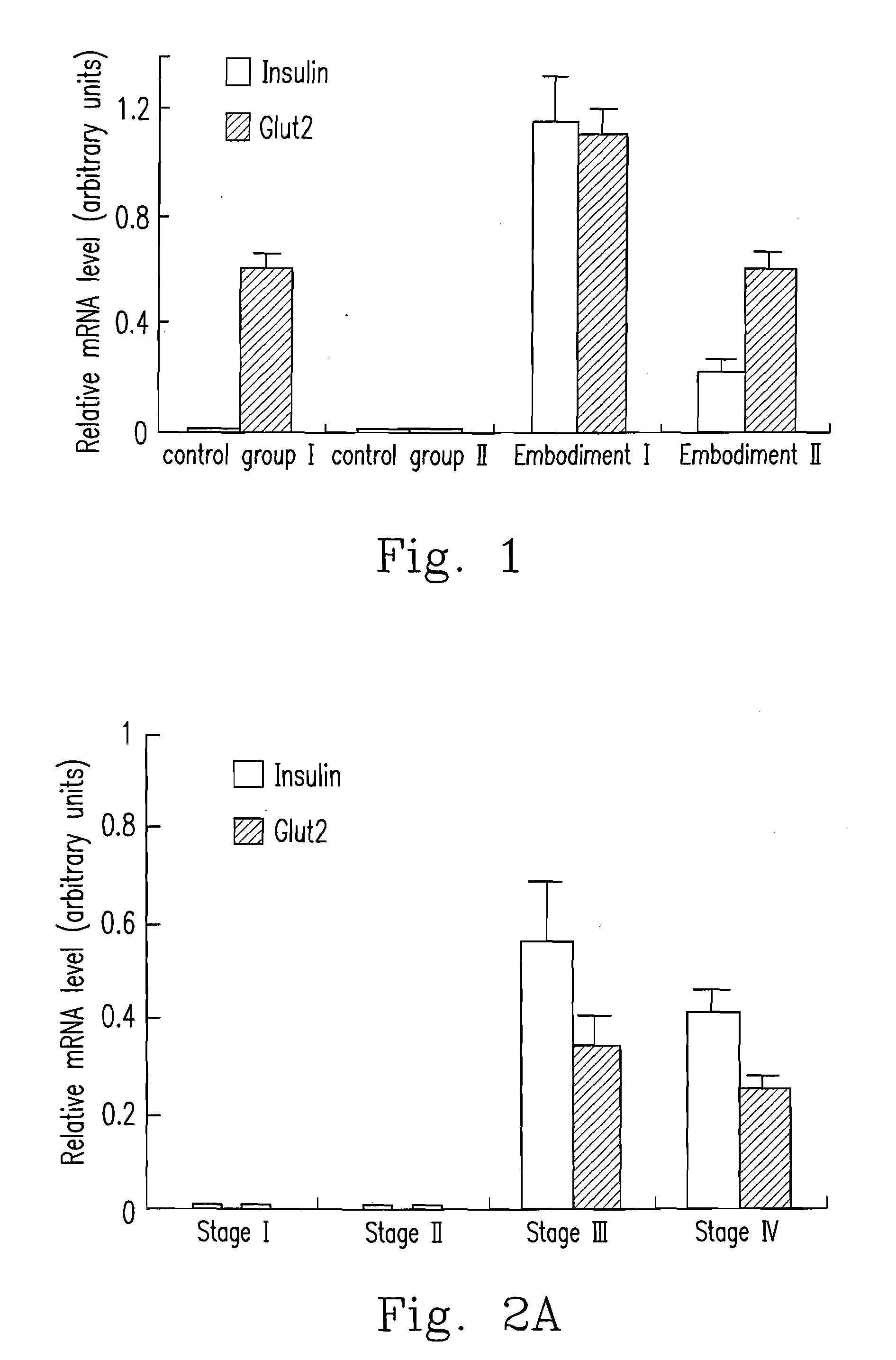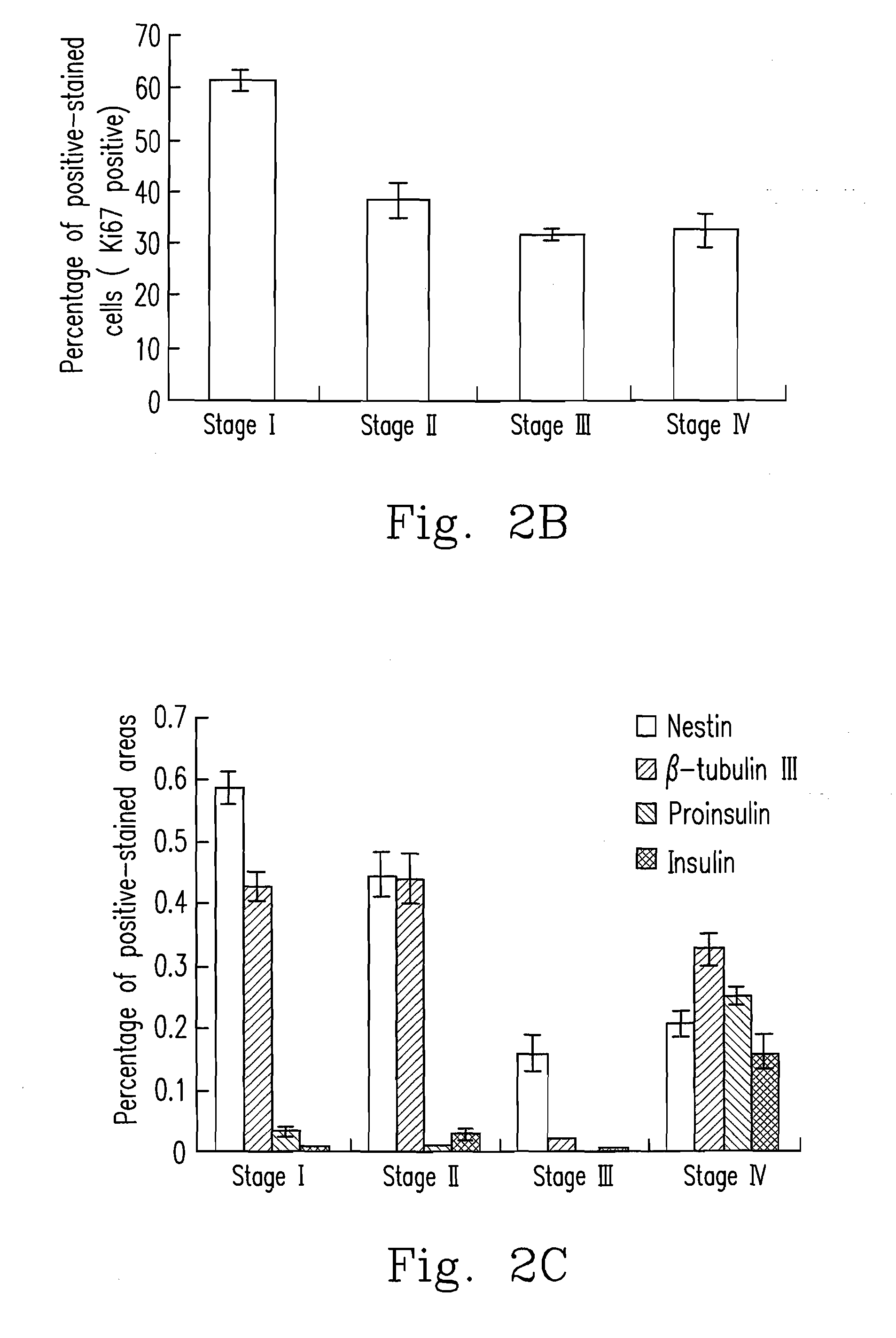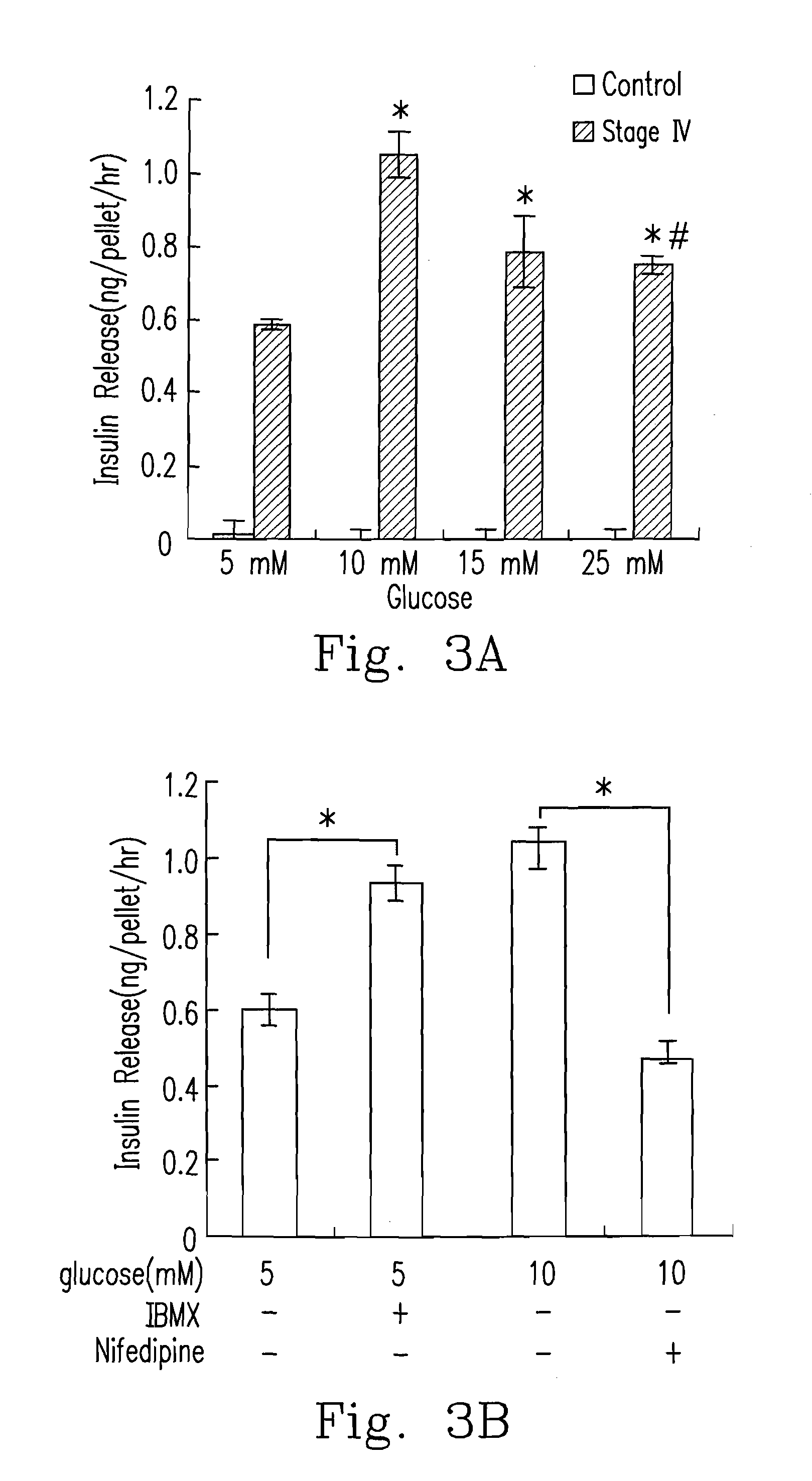Method for promoting differentiation of stem cell into insulin producing cell
a stem cell and insulin-producing cell technology, applied in the field of stem cell differentiation promotion, can solve the problems of limited application, and achieve the effect of increasing the differentiation rate of stem cells and promoting stem cell differentiation
- Summary
- Abstract
- Description
- Claims
- Application Information
AI Technical Summary
Benefits of technology
Problems solved by technology
Method used
Image
Examples
embodiment i
[0038]At Stage 0, undifferentiated human MSCs are suspended with CCM, and aliquots of 2.5×105 cells are placed in 15 mL conical centrifuge tubes and centrifuged at 200-600 g for 5-15 minutes, and then are cultured in CCM for overnight.
[0039]At Stage I, the culture medium is replaced with CCM with the addition of 5 μg / mL fibronectin, and the cells are cultured for 2 days.
[0040]At Stage II, the cells are switched into a medium prepared from 1:1 mixture of DMEM / F-12 medium containing 25 mM glucose, Insulin-Transferrin-Selenium-A (ITS-A), 0.45 mM IBMX and 5 μg / mL fibronectin for 1 day.
[0041]At Stage III, the cells are transferred into DMEM / F-12 medium containing 5.56 mM glucose, 10 mM nicotinamide, N2 supplement, B27 supplement and 5 μg / mL fibronectin for 4 days.
[0042]At Stage IV, the cells are transferred into a medium with the same supplements at the stage III of the Embodiment I but containing 25 mM glucose for 3 days.
embodiment ii
uspension Culture
[0043]At Stage 0, undifferentiated human MSCs are suspended with CCM, and aliquots of 2.5×105 cells are placed in 15 mL conical centrifuge tubes and centrifuged at 200-600 g for 5-15 minutes, and then are cultured in CCM for overnight.
[0044]At Stage I, the culture medium is replaced with fresh CCM, and the cells are cultured for 2 days.
[0045]At Stage II, the cells are switched into a medium prepared from 1:1 mixture of DMEM / F-12 medium containing 25 mM glucose, ITS-A and 0.45 mM IBMX for 1 day.
[0046]At Stage III, the cells are transferred into DMEM / F-12 medium containing 5.56 mM glucose, 10 mM nicotinamide, N2 supplement and B27 supplement for 4 days.
[0047]At Stage IV, the cells are transferred into a medium with the same supplements at the stage III of the Embodiment II but containing 25 mM glucose for 3 days.
embodiment iii
spension Culture
[0048]At Stage 0, undifferentiated human MSCs are suspended with CCM, and aliquots of 2.5×105 cells are placed in 15 mL conical centrifuge tubes and centrifuged at 200-600 g for 5-15 minutes, and then are cultured in CCM for overnight.
[0049]At Stage I, the culture medium is replaced with CCM with the addition of 5 μg / mL laminin, and the cells are cultured for 2 days.
[0050]At Stage II, the cells are switched into a medium prepared from 1:1 mixture of DMEM / F-12 medium containing 25 mM glucose, ITS-A, 0.45 mM IBMX and 5 μg / mL laminin for 1 day.
[0051]At Stage III, the cells are transferred into DMEM / F-12 medium containing 5.56 mM glucose, 10 mM nicotinamide, N2 supplement, B27 supplement and 5 μg / mL laminin for 4 days.
[0052]At Stage IV, the cells are transferred into a medium with the same supplements at the stage III of the Embodiment III but containing 25 mM glucose for 3 days.
PUM
 Login to View More
Login to View More Abstract
Description
Claims
Application Information
 Login to View More
Login to View More - R&D
- Intellectual Property
- Life Sciences
- Materials
- Tech Scout
- Unparalleled Data Quality
- Higher Quality Content
- 60% Fewer Hallucinations
Browse by: Latest US Patents, China's latest patents, Technical Efficacy Thesaurus, Application Domain, Technology Topic, Popular Technical Reports.
© 2025 PatSnap. All rights reserved.Legal|Privacy policy|Modern Slavery Act Transparency Statement|Sitemap|About US| Contact US: help@patsnap.com



